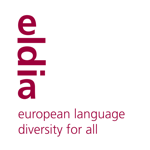ELDIA conducted field research, based on a centrally planned design, with 12 multilingual communities across Europe (of the 14 studies planned originally, two could not be finalized). These groups included both traditional (regional, autochthonous) minorities and migrant communities, and their (heritage) languages covered the full range from highly cultivated nation-state languages (Finnish, Hungarian, Estonian) to small and endangered minority languages without long traditions of literacy, sometimes with unclear or contested status.

Kv(N) = Kven in Norway
NS(N) = North Saami in Norway
Me(S) = Meänkieli in Sweden
Ka(F/R) = Karelian in Finland/Russia
Es(F) = Estonian in Finland
Ve(R) = Veps in Russia
SF(S) = Finnish in Sweden*
Se(E/R) = Seto in Estonia/Russia*
Võ(E) = Võro in Estonia
Es(G) = Estonian in Germany
Hu(A) = Hungarian in Austria
Hu(S) = Hungarian in Slovenia
*The case study on Finnish in Sweden was not finalized. The case study on Seto in Russia could not be conducted, due to the poor accessibility of the target community and lack of supporting infrastructure.
